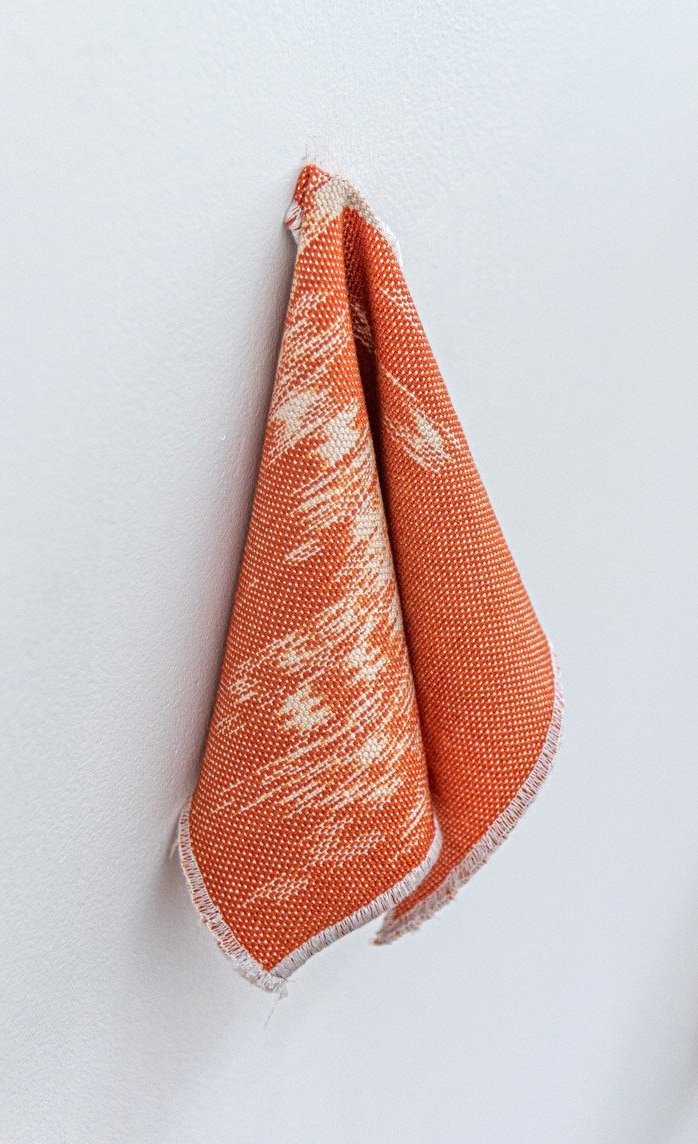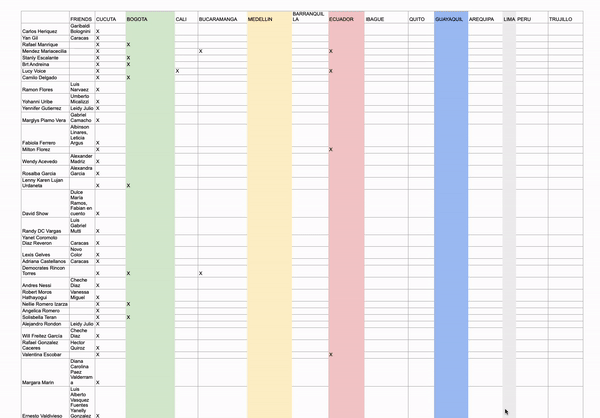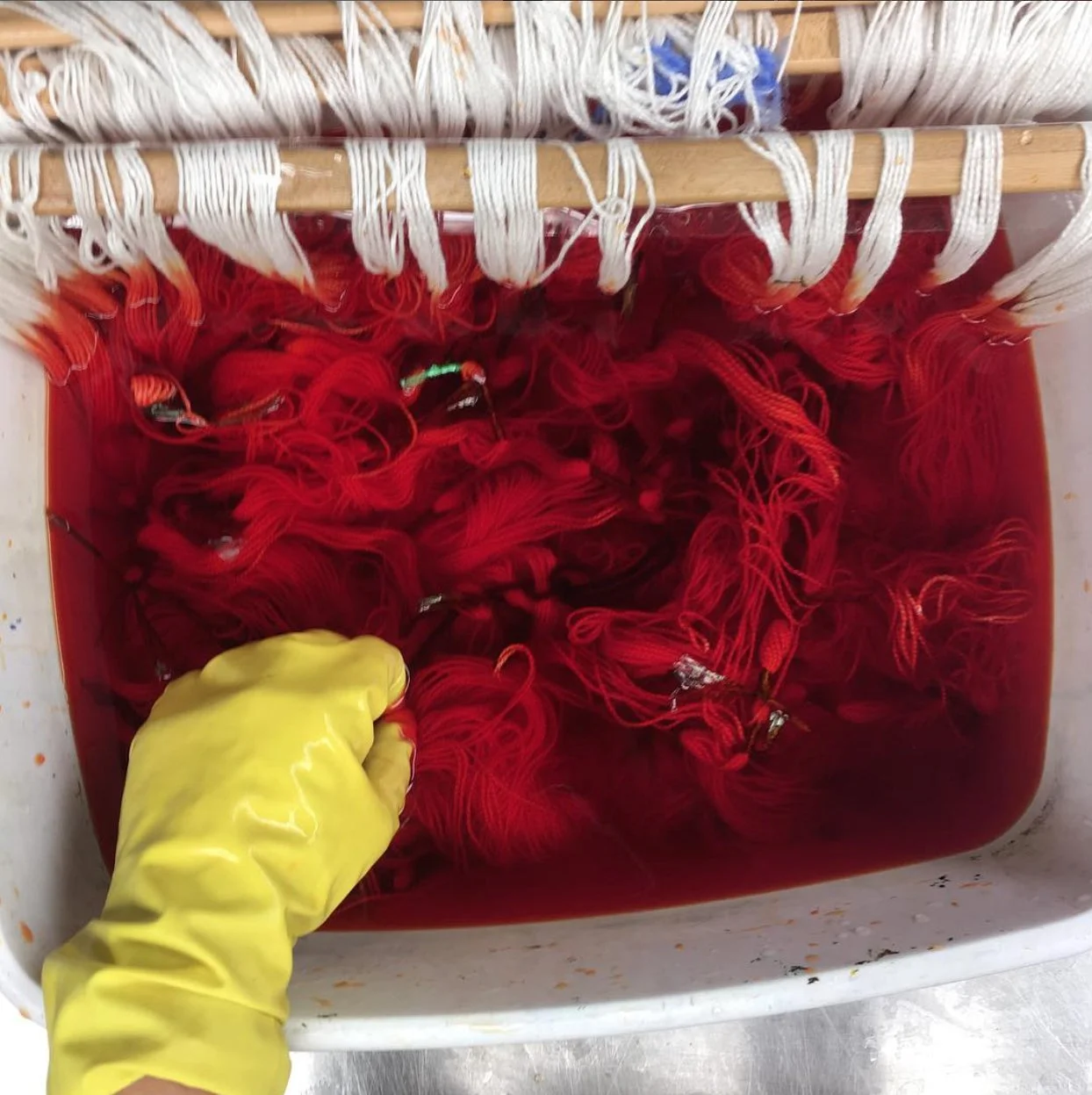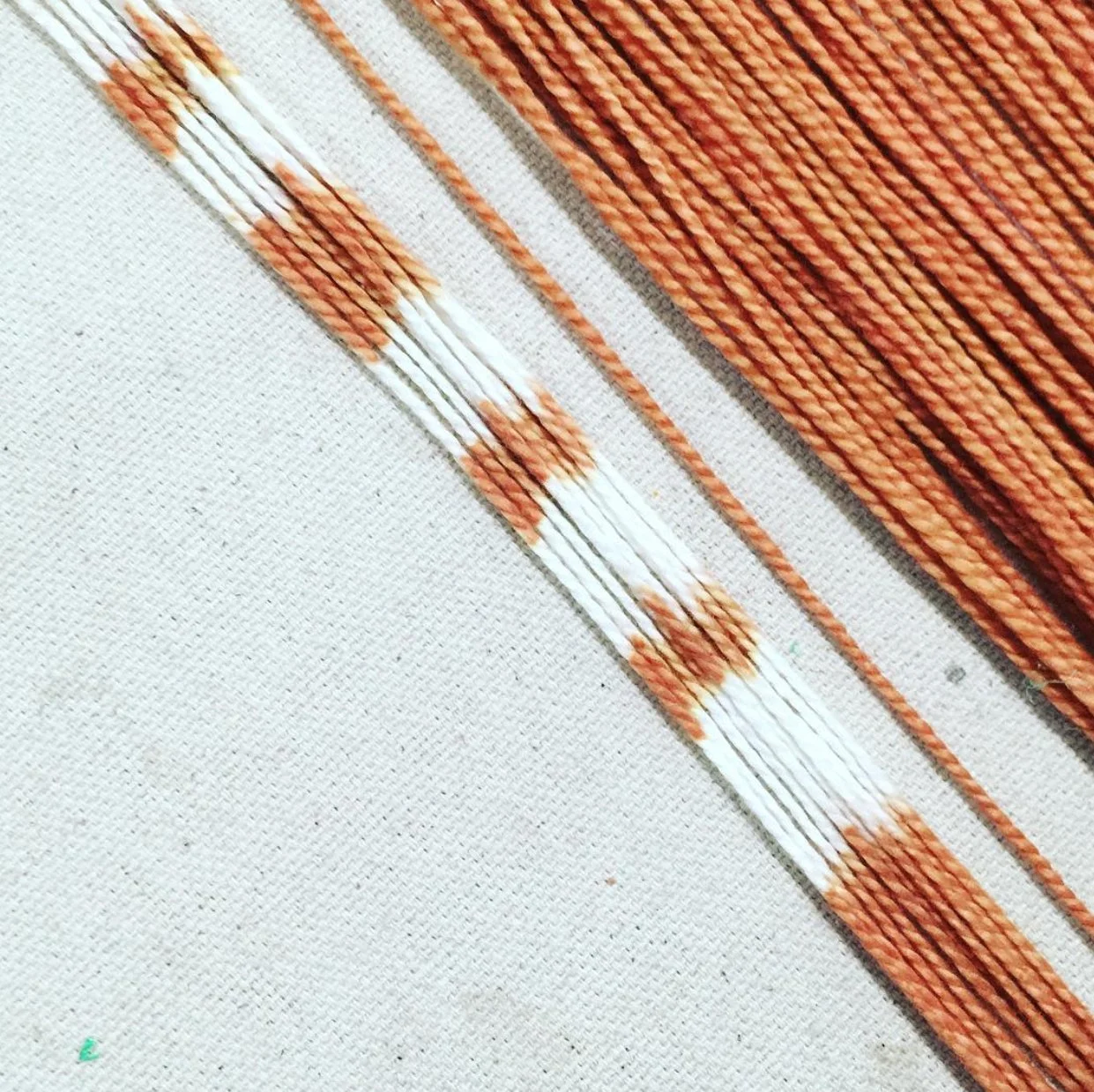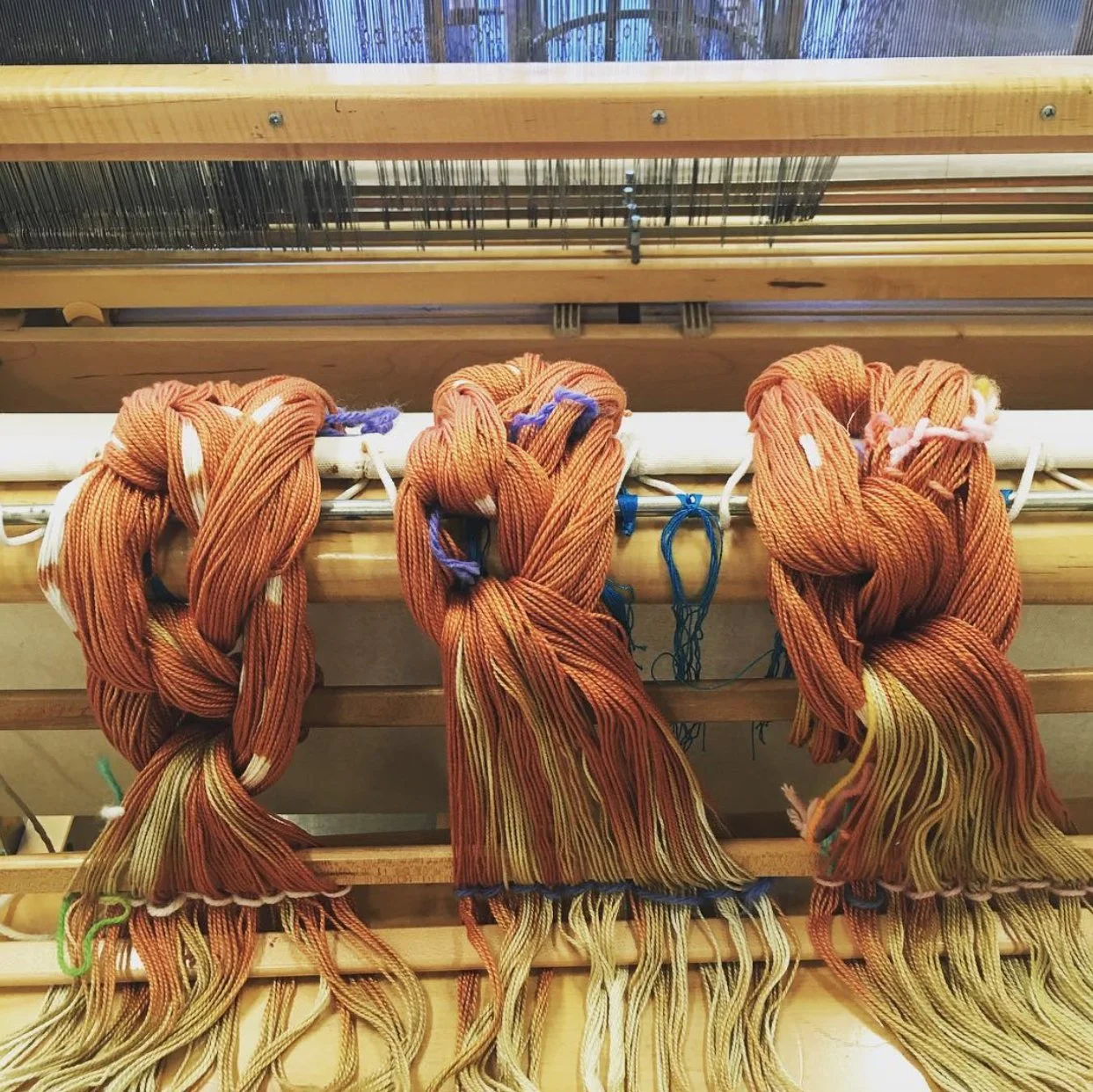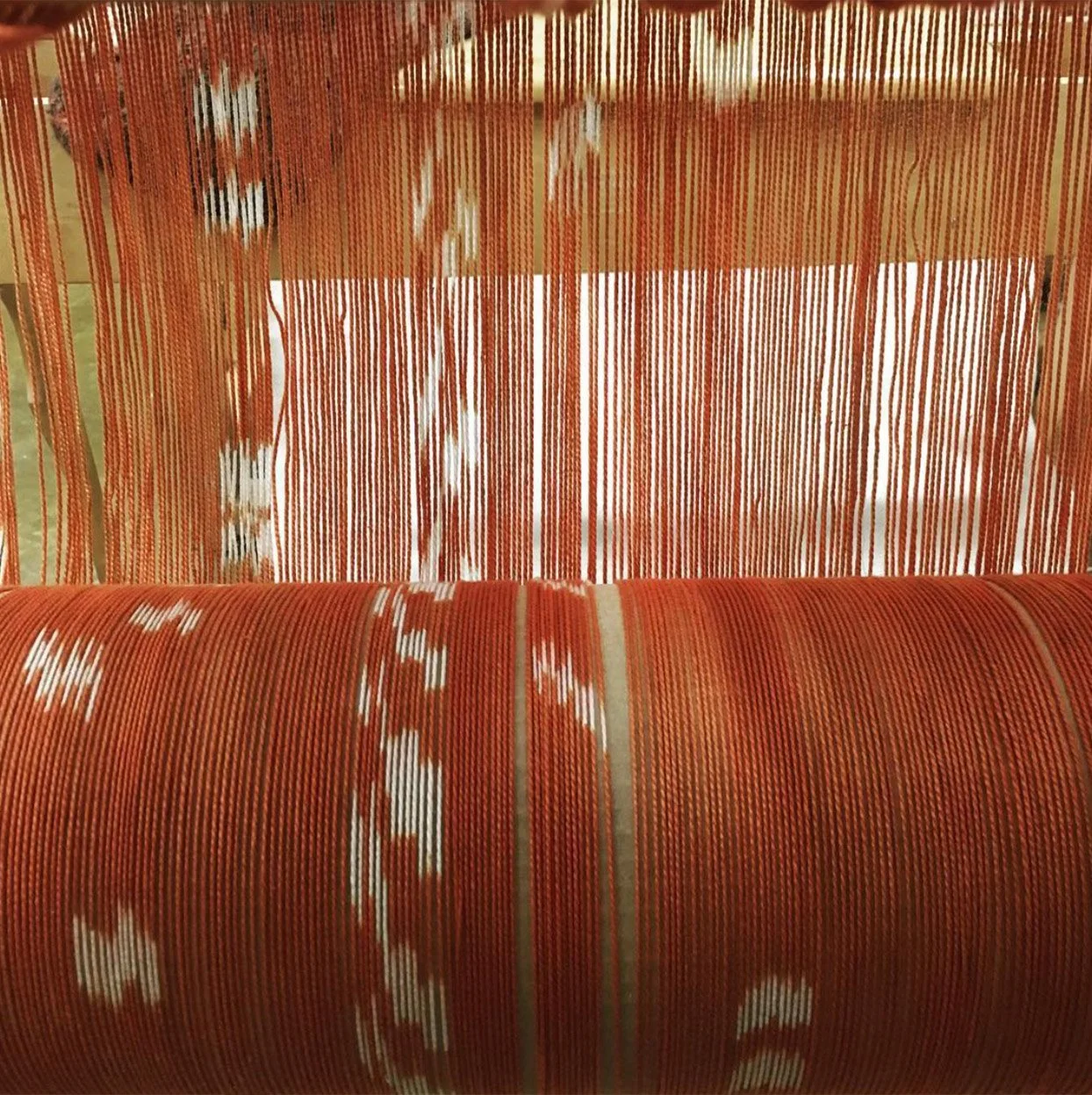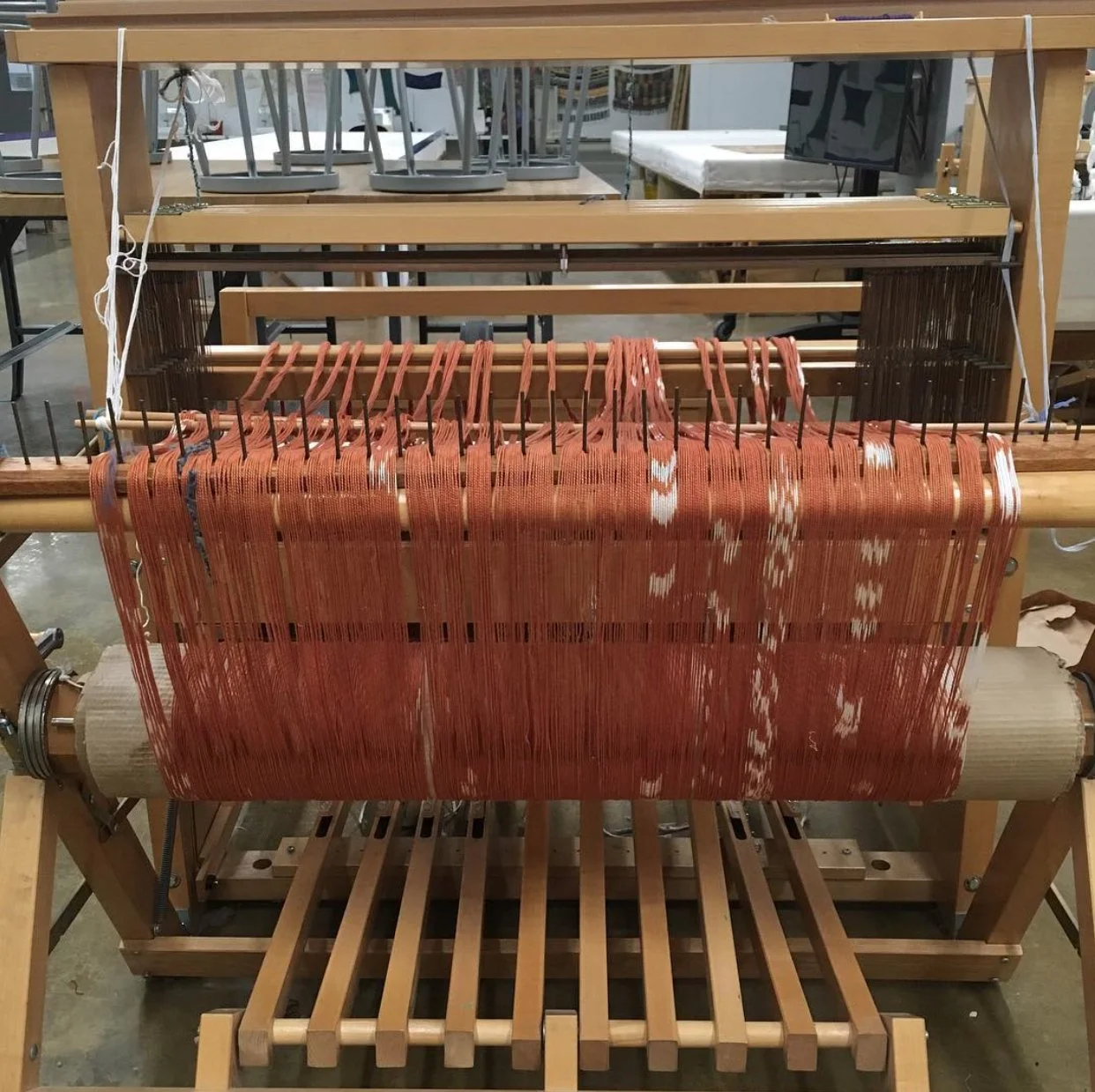Rhumb Lines
From Facebook Data to Navigational Path Lines.
Year: 2019
Materials: Mercerized cotton.
Dimensions: 25 pieces, each 8” x 10”
Location: Edge Zones. Miami
Photos: Ana Mosquera
"Rhumb Lines" emerges as a personal and collective cartography, charting the turbulent journey from Venezuela to Peru, rooted in the conviction that digital spaces are imbued with their users' identity, place, and existence. My own migration in 2016 became part of this vast movement, pushed by the urgent necessity to escape a land ravaged by political turmoil and where survival became a daily challenge.
In Peru, I discovered that my narrative intertwined with countless other Venezuelans, all of us finding solace and guidance in the digital meeting places of Facebook groups like ONG Venezolanos in Peru. These groups provided more than mere information; they served as cyber territories for communal exchange and solidarity.
Driven by a bottom-up approach to understanding community dynamics within mainstream social media, I began meticulously cataloging the membership patterns within these groups. This evolving database—a digital snapshot of life in flux—became the foundation for "Rhumb Lines." I aimed to transpose these digital waypoints into a physical form, utilizing the ancient ikat technique to dye and bind threads, crafting a tangible narrative from the abstract data.
As the dyed threads crossed on the loom, a powerful metaphor took shape: the improvisational nature of our lives, the constant renegotiation of our paths, now woven into a tangible artifact. The rich tangerine hue of the dye anchored me symbolically to the Venezuelan land, transforming the digital and diasporic narrative into a tactile chronicle embedded within the textile pigment.
The work's layout echoes the structure of the data that informed it, with the textiles arranged in a grid, each piece a distinct data set within the broader landscape. Viewed from a distance, the lines on each cloth suggest innumerable traces, yet they remain unreadable, much like the loss of personal detail in the overwhelming narrative of mass migration. All the textiles hang together, but each one dances to its own rhythm, echoing the view that collections must be porous, capable of adapting and improvising, offering multiple levels of understanding.
"Rhumb Lines" is not just a display but a living archive that encapsulates the search for new futures and the weaving of a history that is ours collectively. It’s a navigation chart, both planned and unpredictable, a woven compendium of blurred identities and shared humanity within the tapestry of migration.”
Project Process
For "Rhumb Lines," I designed a data collection methodology that required me to join 82 Venezuelan diaspora Facebook groups to discern patterns in membership and migration trajectories. I then created a record of members' group affiliations, piecing together their potential migratory destinations and pinpointing 25 groups as central to these routes. I translated this data spreadsheet into physical form using the ikat weaving technique. This manual process involved dyeing and binding threads to reflect individual and collective journeys, weaving a tactile archive.
Data Manifesto by Ana Mosquera
Online spaces are not disembodied or placeless (Lingel, 2017); thus, our navigation within them is shaped by our identity, locale, and mode of existence. Places are dynamic, crafted from improvisation and flux, embodying multiple, often contradictory, dimensions simultaneously.
Data, as I refer to it, acts as a transducer (Neff & Nafus) that captures selective aspects that spark reflection in the collector's mind and enable self-narrative.
My cultural curiosity leans towards bottom-up explorations (de Certeau) over top-down approaches. I seek to understand how specific communities navigate within the frameworks of mainstream social media.
I am invested in devising tactics that articulate the essence of digital places. Such articulation might stem from a living archive of tactics—like data tracking to monitor movements and locations—or an anthology of objects interacting with these digital tactical relations.
The potency of a collection lies in its capacity for transformation, to improvise and adapt its logic. The collection's permeable nature harbors varying degrees of knowledge access, a necessity shaped by the exertion of power, compelling it to evolve in this manner.
